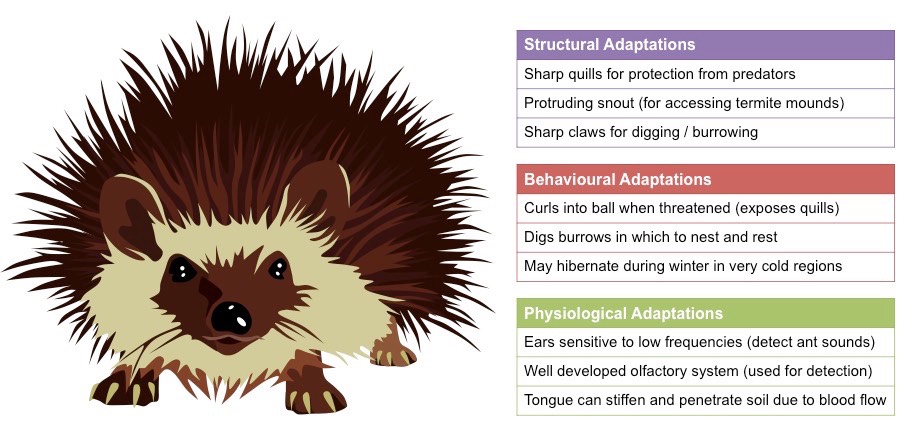![]()
Understanding:
• Adaptations are characteristics that make an individual suited to its environment and way of life
• Individuals that reproduce pass on characteristics to their offspring
Adaptations are features of organisms that aid their survival by allowing them to be better suited to their environment
These adaptations may be classified in a number of different ways:
- Structural: Physical differences in biological structure (e.g. neck length of a giraffe)
- Behavioural: Differences in patterns of activity (e.g. opossums feigning death when threatened)
- Physiological: Variations in detection and response by vital organs (e.g. homeothermy, colour perception)
- Biochemical: Differences in molecular composition of cells and enzyme functions (e.g. blood groups, lactose tolerance)
- Developmental: Variable changes that occur across the life span of an organism (e.g. patterns of ageing / senescence)
Biological adaptations have a genetic basis (i.e. encoded by genes) and may be passed to offspring when the parents reproduce
- Organisms with beneficial adaptations will be more likely to survive long enough to reproduce and pass on these genes
- Organisms without these beneficial adaptations will be less likely to survive long enough to reproduce and pass on their genes
Hence adaptations result in differential reproduction within a species, allowing for natural selection to occur
Adaptations of an Echidna

